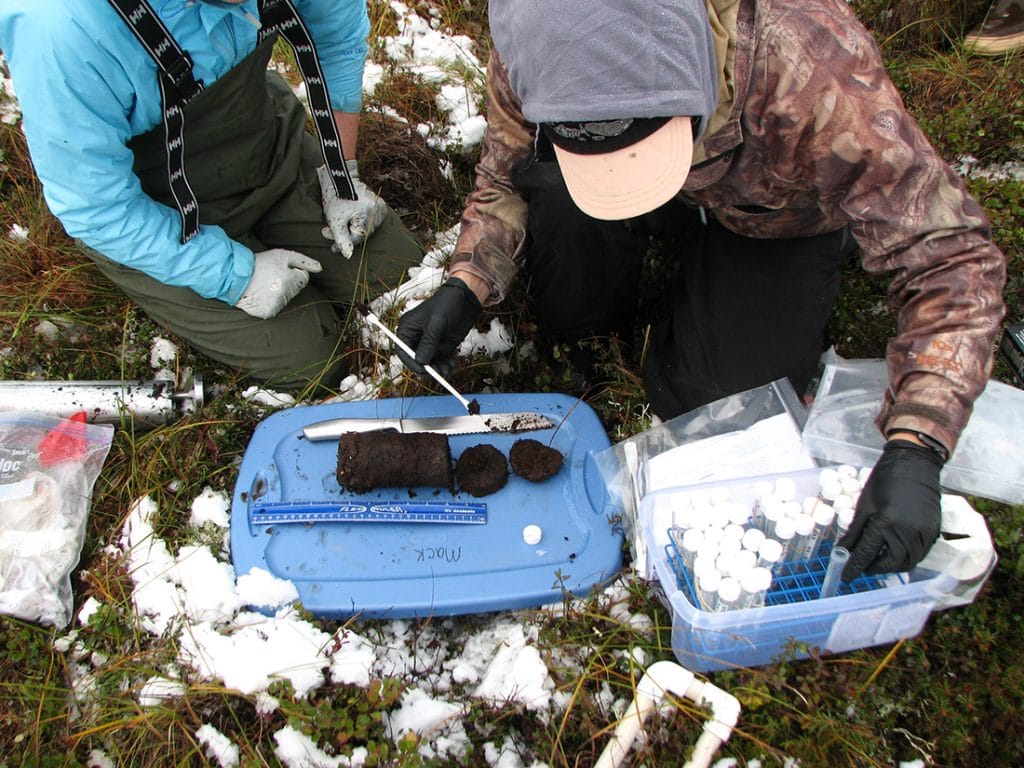Deep beneath the tundra near Eight Mile Lake in Alaska, at the “thaw front” where the active layer meets the permafrost, Northern Arizona University postdoctoral researcher Rebecca Hewitt has been observing a surprising rally: mycorrhizal fungi are congregating, in some cases taking up nitrogen as it’s released from the permafrost into the active layer. Using isotope tracers, Hewitt and her team have found these same fungi at the roots of plants whose root systems are too shallow to reach the thaw front. Hewitt’s findings suggest that these fungi, not yet well-understood, may operate like a superefficient meal kit delivery system for the tundra’s plant communities.
“We know that mycorrhizal fungi explore soil beyond the root system,” Hewitt said. “But the fact that they’re exploring right down at the thaw front, and that they’re active—that’s really surprising.”
Hewitt, a postdoctoral researcher in professor Michelle Mack’s lab in the Center for Ecosystem Science and Society, has a new paper in the Journal of Ecology exploring these belowground processes. She also will present new findings at next week’s Long Term Ecological Research (LTER) meeting in Pacific Grove, California. There, scientists from an expansive network of 28 research sites that stretch from Antarctica to Alaska will meet to compare and synthesize their findings. Ecoss professor and LTER grantee Yiqi Luo will lead a workshop with Edward Rastetter from the Marine Biological Laboratory on forging collaborations to synthesize data gathered across all LTER sites.
The fact that mycorrhizal communities may help plants access growing stores of nitrogen far beyond the reach of their roots has implications for the changing carbon picture in the Arctic. As the Earth’s atmosphere warms, the permafrost is releasing more carbon and nitrogen. With the potential to fertilize plants on the tundra, this fungal connection to the thaw front may be helping to offset carbon losses.
“What we’re seeing complicates the way we thought about who would access nutrients,” Hewitt said. “It turns out there’s this whole alternate route through plants’ fungal partners.”
At the LTER meeting, Hewitt also looks forward to attending an all-day Entering Mentoring workshop with Mack, her own mentor. Mentoring and working with undergraduate researchers has been instrumental to her work and discoveries, Hewitt said. She is working with two students as part of Ecoss’ undergraduate academy.
“There are undergraduates involved at every step,” Hewitt said. “There’s no way we would be able to get the amount of work done that we do without them.”



